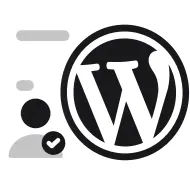Accessibility in web design ensures that digital platforms are usable by everyone, regardless of their abilities. With over a billion people worldwide living with some form of disability, creating an accessible website isn’t just about meeting legal requirements—it’s about fostering inclusivity and improving user experiences.
WordPress, the most popular CMS globally, makes accessibility achievable through a range of specialized plugins. This guide explores the importance of accessibility, reviews the top WordPress plugins for 2025, and offers actionable tips for creating a more inclusive online presence.
Quick Summary:
- Make your website accessible for all users.
- Use top WordPress plugins to improve accessibility.
- Apply best practices like alt text and clear headings.
- Boost SEO, user trust, and avoid legal issues.
Table of Contents
- Why Accessibility Should Be a Priority
- 1. Inclusivity and Social Responsibility
- 2. Legal Compliance
- 3. Enhanced SEO Performance
- 4. Improved User Experience
- Top WordPress Plugins for Accessibility in 2025
- 1. WP Accessibility
- 2. One-Click Accessibility
- 3. Accessibility Checker
- 4. UserWay Accessibility Widget
- 5. Equalize Digital Accessibility
- Best Practices for WordPress Accessibility
- 1. Use Proper Heading Structures
- 2. Add Descriptive Alt Text to Images
- 3. Optimize Keyboard Navigation
- 4. Provide Video Captions and Audio Transcripts
- 5. Choose Accessible WordPress Themes
- How Accessibility Benefits Your Business
- 1. Expands Audience Reach
- 2. Builds Trust and Credibility
- 3. Reduces Legal Risks
- 4. Enhances SEO and Traffic
- Qrolic Technologies: Your Accessibility Partner
- Conclusion
Why Accessibility Should Be a Priority
1. Inclusivity and Social Responsibility
Accessibility demonstrates your commitment to inclusivity, providing equitable access for all users. People with visual, auditory, cognitive, or mobility challenges often face barriers when navigating the web. Accessible websites ensure that these barriers are removed, fostering a sense of belonging.
2. Legal Compliance
Web accessibility laws, such as the Americans with Disabilities Act (ADA) and the Web Content Accessibility Guidelines (WCAG), mandate compliance for digital platforms. Non-compliance can lead to lawsuits, hefty fines, and reputational damage.
3. Enhanced SEO Performance
Accessibility best practices often align with SEO strategies. Features like descriptive alt text for images, keyboard navigation, and clean HTML structure can improve your website’s search engine rankings, boosting visibility and traffic.
4. Improved User Experience
Accessible websites are user-friendly for everyone. Features like clear navigation, readable fonts, and adjustable contrast settings enhance usability for all visitors, not just those with disabilities.
Top WordPress Plugins for Accessibility in 2025
WordPress plugins can streamline the process of making your website accessible. Here are the top tools to consider:
1. WP Accessibility
WP Accessibility is an essential plugin that fixes common accessibility issues.
- Features:
- Provides skip links for easier navigation.
- Highlights and fixes missing alt text.
- Enforces color contrast requirements.
- Why Use It?
It’s ideal for beginners looking to address basic accessibility challenges.
2. One-Click Accessibility
This plugin adds a floating toolbar with accessibility features that users can control.
- Features:
- Text resizing options for better readability.
- Color contrast toggles for improved visibility.
- Adds a skip-to-content link for faster navigation.
- Why Use It?
It’s user-friendly and requires minimal setup, making it perfect for small business owners.
3. Accessibility Checker
A robust tool for auditing your website’s compliance with WCAG standards.
- Features:
- Performs real-time scans of your pages and posts.
- Provides detailed reports on accessibility issues.
- Supports custom post types and multi-site installations.
- Why Use It?
It’s great for developers and agencies working on multiple websites.
4. UserWay Accessibility Widget
An AI-powered accessibility tool that automates compliance.
- Features:
- Includes screen reader support, font adjustments, and contrast options.
- Automatically generates alt text for images using AI.
- Compatible with WCAG, ADA, and other global standards.
- Why Use It?
It’s a powerful option for businesses looking for a quick, comprehensive solution.
5. Equalize Digital Accessibility
Designed for larger organizations, this plugin offers enterprise-grade accessibility tools.
- Features:
- Advanced scanning and issue tracking.
- Fixes accessibility problems specific to custom WordPress themes.
- Multi-site network compatibility for broader coverage.
- Why Use It?
It’s best for enterprise-level projects that require in-depth accessibility features.
Best Practices for WordPress Accessibility
Beyond plugins, implementing these practices ensures your website meets accessibility standards:
1. Use Proper Heading Structures
Organize content using H1, H2, and H3 tags to create a logical flow. This structure helps screen readers interpret the content hierarchy, improving navigation for visually impaired users.
2. Add Descriptive Alt Text to Images
Alt text is essential for screen readers to describe images. Make sure it’s concise but descriptive enough to convey the image’s purpose.
3. Optimize Keyboard Navigation
Many users rely on keyboards instead of mice. Ensure your website is fully navigable using the tab and arrow keys, especially for forms, menus, and interactive elements.
4. Provide Video Captions and Audio Transcripts
Include closed captions for videos and transcripts for audio content to accommodate users with hearing impairments.
5. Choose Accessible WordPress Themes
Select themes that meet WCAG standards. Accessible themes often include features like high-contrast design, keyboard-friendly navigation, and semantic HTML.
How Accessibility Benefits Your Business
1. Expands Audience Reach
Accessible websites open your content to a broader audience, including people with disabilities. This inclusivity translates into increased engagement and conversions.
2. Builds Trust and Credibility
Accessibility signals that your business values inclusivity, fostering trust and loyalty among customers.
3. Reduces Legal Risks
By complying with accessibility laws, you avoid potential lawsuits and financial penalties.
4. Enhances SEO and Traffic
Accessibility features improve search engine performance, making your website more discoverable to users.
Qrolic Technologies: Your Accessibility Partner
At Qrolic Technologies, we specialize in creating accessible, user-friendly WordPress websites. Our team:
- Conducts comprehensive accessibility audits.
- Integrates industry-leading plugins like WP Accessibility and UserWay.
- Ensures compliance with ADA, WCAG, and other standards.
Partner with Qrolic Technologies to make your website a beacon of inclusivity and usability.
Conclusion
Accessibility is more than a design consideration—it’s a necessity. By leveraging the right WordPress plugins and following best practices, you can create an inclusive website that benefits both users and your business. Don’t wait until accessibility becomes a legal or reputational issue—take proactive steps today to make your WordPress site accessible to all.








